According to You: The worst engines you’ve experienced
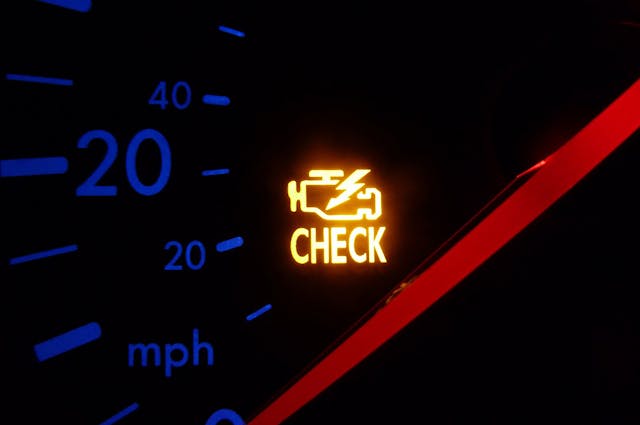
We recently asked about the worst engines you’ve experienced in your lifetime, and you certainly delivered. Perhaps too well, as the responses were overwhelming. How on earth could we cover all the bad engines made over the years? Our solution to this (wonderful) problem was thus: we thinned the herd down to responses that specifically included personal experiences that add a little more value than just the usual re-hashing of the same stories you’ve heard elsewhere.
Let’s get right to it!
The Iron Duke four-cylinder
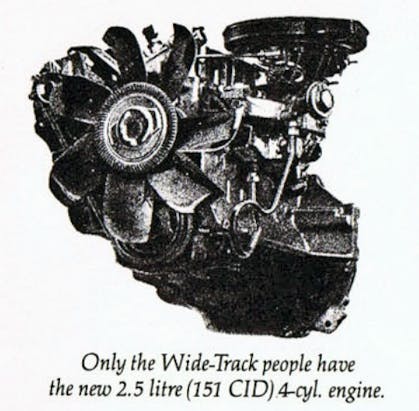
Charles A Parent said that the worst engine he ever owned was a Pontiac Iron Duke that “constantly ate Throttle Position Sensors and cracked the cast iron exhaust manifold three times.”
While the inclusion of TPS sensors suggests it might be the later TECH IV design, combining that with a four-speed shifter “that was prone to locking, in or out of gear” caused him to Lemon Law the car.
VW Type 412 1.8-liter flat-four
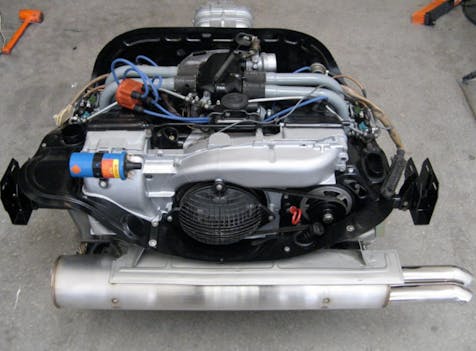
Hagerty Community user lasersailor came in strong with this one:
“I’ve got you all beat. 1679cc flat 4 in my parents 1972 VW411 wagon with a wimpy 3-speed auto transmission. Two fires caused by improper fuel injection repair at the so-called dealer in Florida. The 2nd fire caused near total immolation. Plus it was slower than a Pinto or Vega.”
Toyota 3VZ-E V-6

Hagerty Community member John Nichols gave a very balanced perspective on one of the more desirable and durable engines from Toyota, because sometimes tearing into something can turn into quite a shock:
“I recently got involved with a 1992 Toyota V-6 rebuild. The truck had a blown head gasket, the oil was full of water. Obviously these vehicles have a huge cult following of being amazingly reliable which I’m sure is well deserved.
HOWEVER when things do start to go it will cost you and assembly must be performed like a surgical operation. Parts and pieces and shrouds, crossover exhaust converters not to mention miles of vacuum lines weird little filters and of course the timing belt alignment are all part of the problem, not to mention the famous under the manifold sensor wire.
Ordinarily working on engines can be kind of fun be it a small block or an English roadster, although you have to make little tweaks often and pay attention to detail the reward of a few hours attention is measurable performance improvement.”
Chrysler 2.2-liter four-cylinder

This one might spark some controversy, as Chrysler’s 2.2-liter engine was designed specifically for a new platform and a new automotive reality. That said, Hagerty Community member David likely had an older model, but his experiences are certainly worth a read:
“As I recall memories of the early 80’s K Car with that darn 2.2 liter I feel a tension headache coming on. That engine had more use as a boat anchor, and I remember my poor dad spent more time and dollars repairing shoddy engineering design.
Crazy but true, when I got my licence and started to drive – I took that K Car to town and the engine actually fell out of the car! The front motor mount failed in the middle of an intersection. I guess even the car itself was sick of that engine and tried to spit it out.”
I reckon that A. Raymond had it even worse, but at least the dealership asked him a rather hilarious question:
“I had a Chrysler 2.2 non turbo forced upon me as a young fellow. Driving home from work in rush hour traffic, the engine decided it was time to digest itself. (It had 25,000 miles on it at the time.) The dealership accused me of ‘racing’. I laughed long and hard at the suggestion and told them I wouldn’t be doing too much racing with 88 hp.
After begrudgingly replacing the motor under warranty, I drove it another 3 months before selling it to another unfortunate schmuck. It was the worst thing I have ever had the displeasure of having to drive. I look back now and still laugh at that ‘you must have been racing’ suggestion.”
Oldsmobile Quad 4 four-cylinder

Brian was pretty sick of the Iron Duke in his 1985 Cutlass Calais, noting it was reliable but also “noisy and weak.” So imagine his delight when the Quad 4 made a splash in 1987:
“I was so excited to get one of the first Quad 4s. More power and much quieter. My love affair ended at 67,000 miles when it had a complete meltdown out of warranty. My very last GM car.”
And then we heard from Tom:
“Yes, I had the Quad 4 in a Pontiac Grand Am. Delightful, until the head gasket failed. Dealership near my work (different state from purchase point) tried really hard not to cover the failure but, after showing how much coolant I was adding, did a cheap fix. Probably tore it down to only replace the head gasket because it failed again, just out of warranty.
At that point, I was back where I bought the car, and they repaired it again, but it still didn’t seal. Any time I got in traffic, it would overheat and blow out the coolant. Tried checking the cooling system (radiator, etc.) without finding any issues. Aluminum head must have been significantly warped by that point. Finally sold that car. Too bad as it was fine as long as it was moving.”
Honda CVCC four-cylinder

Dan T Man takes us over to Honda, a brand we don’t usually hear about in this context. But he noted that the “1751 CC engine in the original Honda Accord was known to develop a head gasket leak between the #3 and #4 cylinders every 30,000 miles.” He said that it ran fine otherwise, and learned that “when the engine lost about 50 rpm at idle it was time for another change” of the head gasket.
AJD went further:
“My first brand-new car was a 1977 Honda Civic CVCC. Within 60K miles it had eaten 3 water pumps and blown its head gasket. The head gasket had been recalled but would not be replaced until blown. It really blew up nicely and the engine never ran right again.”
Buick 3.8-liter (Malaise Era) V-6

Don’t take this as a slam on Buick’s tried-and-true, 90-degree, 3.8-liter V-6. Odds are the problems that Dwayne Wertman experienced came from the Malaise Era engineering mounted to its induction and exhaust systems.
“I bought a new 1981 Oldsmobile Cutlass V-6. The engine would ping and rattle just trying to keep up with traffic. Often times it would stall in the intersection. I returned to the dealership on many occasions. It was a really good dealership, [because] after eight months they bought back and all I lost was tax and license.”
eagerdever drives home the point of this being an issue from the 1970s and early 1980s:
“I experienced oiling problems accompanied by valve train noise and the engine light in a 3.8 V-6 in a ’79 Olds Cutlass wagon. I’d stop and let the engine cool down, and then be on my way. The crankshaft finally broke in half. Because it broke on the diagonal, the engine continued to run, though poorly. A co-worker had similar problems with that engine in a Grand Prix, replaced under warranty. Another co-worker lost the engine in his Buick Skyhawk (the Buick version of the Chevy Monza). All three were due to poor oiling.”
Mitsubishi 4G54 four-cylinder with Mazda sprinkles
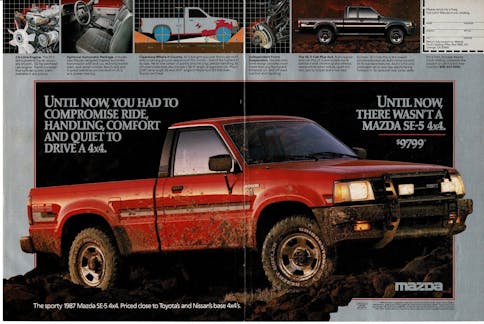
While the Buick was a victim of engineering mandates of the era, apparently Mazda shot themselves in the foot with a half-baked design made with no third-party intervention! Check out Arthur Hill’s fascinating tale of deceit:
“In 1988, as my family grew to 4, I needed to trade my Toyota 4X4 Pickup for one of the new ones with actual back seats to hold the two children. Unfortunately Toyota did not produce one until a few years later, but Mazda had a very nice looking B2600 4X4 that had back seats. This truck had the worst engine I ever had to deal with. I quickly discovered that if you really put your foot into it under a load, the engine would stutter and almost stall. Many trips to the dealer failed to solve this issue.
Finally a mechanic took me aside and admitted that Mazda rushed the truck into production without having an engine big enough, so they used a Mitsubishi 2.6 engine instead, but to make it easier to work on for their service people, they adapted their own accessories including the carburetor. Under load the only way the engine could get enough fuel was to link both barrels together all the time.
Needless to say, Mazda dropped this truck and you never see any on the road. Terrible truck with a terrible engine, but the actual Mitsubishi 2.6 engine was probably fine in their own vehicles.”
Mitsubishi 4G54/Chrysler HEMI 2.6-liter four-cylinder

No, not that Hemi. Or that one. We’re talking about the hemi-headed Mitsubishi 2.6-liter used on the Chrysler K-car and its derivatives. Chris Harshman said that the “worst engine I ever had was a 4-cylinder Mitsubishi engine in my 1982 Dodge 400. I used to joke with my friends that I could accelerate from 0-to-35 in 12 seconds.”
Subaru boxer flat-four/flat-six
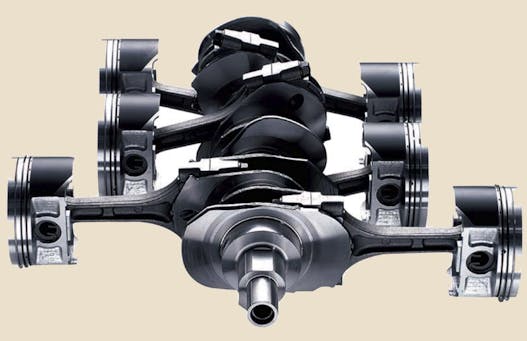
BobJ chimed in with one of the more offensive engines in modern history: the head gasket-munching Subaru boxer. But unlike other stories here, he made the same mistake twice.
“Had a 2005 and a 2010. Both blew head gaskets. Out of warranty but I complained and Subaru of America paid for half. Everyone complains about poor head gasket design & construction but I also wonder about open deck block design.”
GM 2.4-liter Ecotec four-cylinder
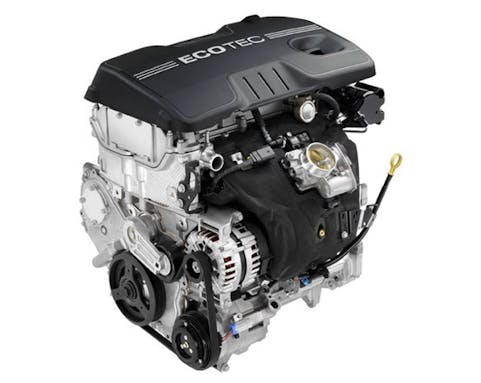
Hagerty Community member Rob keeps us in a more modern era, with a problem with the Ecotec 2.4-liter mill in his 2010 Chevrolet Equinox.
“Here’s a counterpoint for everyone who marvels at the reliability of modern cars. Launched just after GM’s bankruptcy, I should have known they probably cut corners on validation but couldn’t pass up a nice sized SUV that cracked 30 mpg.
It went through numerous high pressure fuel pumps. The timing chain tensioner went bad. The variable cam timing system went out and timing chain would slap like crazy when you started it. It had a bad heat treat on a pin in the cam shaft. Started burning over a quart of oil every 1000 miles and was rebuilt under warranty just before 50k Powertrain warranty expired. And I never got anywhere near 30 mpg on the highway.”
Ford 1.5-liter Ecoboost four-cylinder

Steve notes that his 2015-vintage, 1.5-liter, Ford EcoBoost engine is “absolute garbage compared to every other engine I’ve had the pleasure (or displeasure) of operating.” His example needed a new long block after 60,000 miles, and this helped him create a visionary notion about the EcoBoost’s promise of power and efficiency in a single engine:
“The reality is that you can’t have it all and ultimately lose out due to the extra complexity and stresses on the engine. I am not sure if the other EcoBoost variants are like this and I don’t care to find out personally.”
Holden Starfire four-cylinder

Mr. Nigel Utting takes us to the Land Down Under, reminding us that “GM Holden came up with an abominable 1.9 liter 4 cylinder named the Starfire.” The lack of power likely made Nigel’s comments far from the minority, with fuel economy numbers there were disappointing to boot:
“Based on a cut down six, this god-awful thing used to have a couple of seconds delay between hitting the accelerator and responding, a bit like downloading revs of the internet with a slow connection.”
Ford Cologne V-6
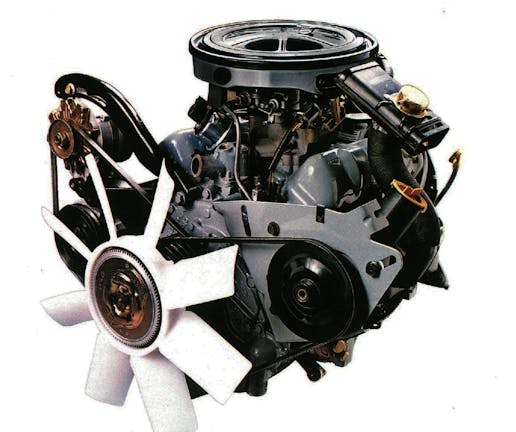
While Ford of Germany contributed greatly to the automotive landscape in Europe and the USA alike, Patrick Abbott reminds us that the Cologne V-6 wasn’t necessarily one of them. His example “regularly destroyed rocker arm assemblies and main bearings” while Richard Eaton was truly cursed with a lemon:
“I purchased a new, 1990 Ford Ranger with the 2.9-liter V6. Should have seen this coming when the transmission had to be replaced 4x for porous castings, and then both heads cracked under a recall. But then less than 50k miles after those heads they were again cracked sufficiently to turn the oil white in 1000 miles. Never again will I buy Fords.”
The Oldsmobile Diesel V-6
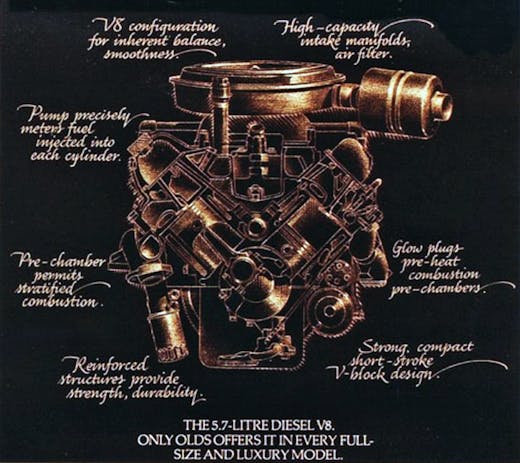
TerryTwoUtes picked up an example of an engine that history hasn’t looked too favorably upon: the Oldsmobile diesel.
“My parents had a ’78 Oldsmobile Delta 88 diesel, the dreaded 350 diesel engine derived from the gasser engine. After about 5–6 blown head gaskets and even one full short block replacement, it was finally traded off. Only good thing was GM trying to save face and all of those repairs were covered under extended warranty.”
Cadillac HT4100 V-8

Speaking of obvious punching bags, Hagerty Community member Coffeyclan reminds us all how low Cadillac went upon the introduction of this “High Technology” motor:
“The worst was Cadillac’s HT4100 engine. Acceleration was at a snail’s pace, the timing chain went bad twice, etc, etc, etc. I sold this car before the warranty ran out!”
Detroit Diesel “Fuel-Squeezer”
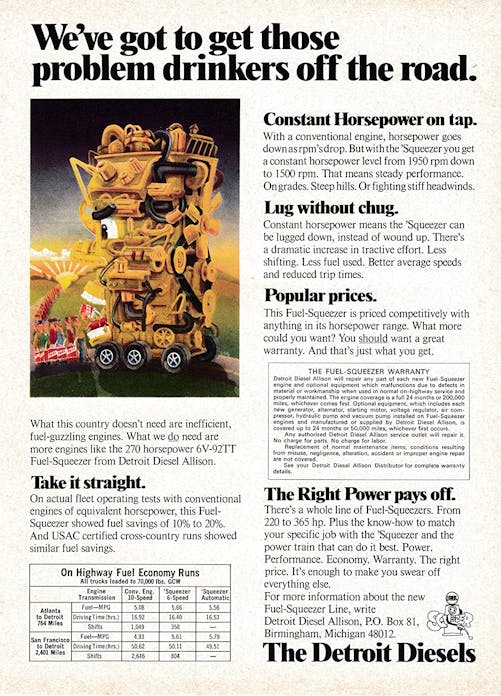
The one, the only, the legendary DUB6 threw us a curveball, thanks to his experience driving commercial trucks:
“In the mid-’70s, I drove longhaul truck for a fleet operator that leased their rigs. Most of the trucks had Cat engines and either 13 or 18 speed transmissions. As fuel prices rose during the embargo period, the leasing company offered up a Kenworth needle-nose with Detroit Diesel “Fuel-Squeezer” and 6 speed tranny to test out. Guess who was low enough on the pole to get picked to drive it for what was supposed to be 3 months?
That thing was so gutless – and the gear ratios so far apart – that even on the slightest grade, I was lucky to be able to manage 20 mph, loaded. Empty, it might get to 50 downhill, but then of course, there would be a corresponding upgrade. Fuel squeezing? Hardly. Most of the big Cats were averaging 4.5-5 mpg. This little longnose managed about 6.0 – mostly because the throttle had to be just about wide open all the time just to maintain forward momentum.
Maybe would have been fine for a flat-land operation, but in the mountainous WEST, it was pretty sad. My trips started taking up to twice as long as was projected, and several appointments would be missed every week. After about 8 weeks, the truck went back to Kenworth!”
Toyota 18R-C four-cylinder
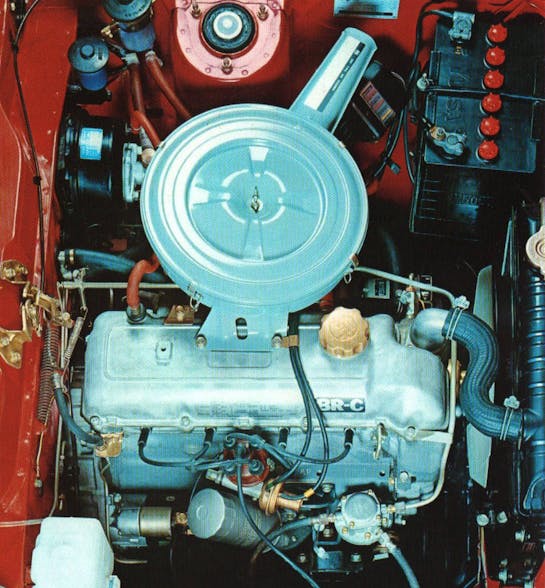
Let’s be clear on one thing: This isn’t a slam on all Toyota 18R engines, only the California-spec motor aimed at reducing emissions. Pete notes that the 18R-C was never designed for durability:
“I am a car guy and former auto mechanic. By far the worst designed and engineered engine was a Toyota 18R-C. I have had experience with more than one, and they all burned valves every 15,000 miles even after Toyota did a factory upgrade to “fix” the problem (which it did not). I drove the car for 75,000 miles and did 5 valve jobs before I woke up and sold it for $500, it did have a good clock though.”
Chevrolet 2300 four-cylinder

Of course the 2300 motor would make the list, as there were three negative comments to this effect. It didn’t help that the early Vegas weren’t the most reliable dance partner, and NCB chimed in with a personalized tale of ownership:
“I owned a 1973 Vega GT. Yes, I’m dating myself. First, and worst car I ever owned. Engine overheated due to poor cooling system design which led to scored cylinder walls in the aluminum block. It drank oil! Bad valve stem seals and “rusting away to nothing in 5 years” were icing on the cake. MotorTrend Car of The Year in 1971!”


Brought back memories of those 1st gen Honda CVCC engines. They came in 1.5, 1.6 and 1.75 liter versions. Remember Honda proactively replacing all the headbolts and head gasket on our 1977 Accord due to potential head gasket blowing.
Worked on these engines a lot and up-to-date headbolts, good head machining and a Honda OEM gasket was a must otherwise it was white smoke and blown gasket between cylinders 1-2 or 3-4.
Waterpumps were weak and overtensioned belts accellerated the wear on the waterpump bearing.
Routinely got 150+k miles out of these motors. The 3bbl carb for CVCC engine was also cool.
It was a very smooth 4 cylinder for it’s time and coupled to a 5-speed manual made it fun.
What I really like is the VW Type 4 motor being on the list for poor repairs by a shop and it was slow. How does that make the engine bad? They are still building type 4 motor for off road use! That engine in different configurations power the VW Buses from 1972 to the Waterboxers, and the Porsche 912E and 914’s. May have been more of a repairs shop problem. I think the engine design was pretty good.
Well I had a beautiful looking 87 Fleetwood with a 5.0 in her. Maybe it was just that particular engine but it had a hell of a time keeping that big machine rolling. Since then when I look at that model I always look fir a 5.7.
Allow me to add the Mopar “Sludge motor” of the early 2000s. I had one in s Sebring. Once the motor was warm, the oil light would come on any time it was at idle. I manages to sell it before it went down for the count.
Reading through, I see lots of talk about this motor
i also had a 74 “Dodge” Colt. The Mitsu motor in it was absolute garbage,
Bought a Buick T-Type Regal new in 1984. The Mass Air Flow sensor in the turbo 3.8 never lasted more than 5k miles. When ordering, the dealer actually advised against it, saying the tech was unreliable. But it was great fun when running.
2016 Volvo XC 60,did’t see any comments about it,at 80k miles started using oil,am religious about oil change,Volvo says every 10k oil change,I did it at 6k intervals, now at 107k miles using 4qt’s /800 miles,dealer Quote about $7k for in frame rebuild, tech said 2015 &2016 had piston/ring issue,great winter car,runs great,rebuild cheaper than new one,will see if Volvo helps out! We have 1999 Volvo S80/T6 with 300k does’t use oil,leaks if shop guys crack plastic oil filter canister, also have 2001 GMC with 300k,does’t burn a drop or leak! Thanks for letting me complain!
I’m really surprised to not see Kia on the list? My wife bought a Soul, and they blow up like clockwork. Around 60K seems to be the average for them to detonate, and I do mean detonate! Bottom end failure so catastrophic that a con rod knocked the starter off of the block. She was lucky, at the time warranty was up in two weeks. Took forever to fix simply due to lack of parts. The dealer had six other ones waiting for engines at that time. Begging for a class action suit if you ask me.
I have to disagree with the Mopar 2.2 being on this list. I have an ’85 Turbo 2.2 that has about 220,000 km on it – the block is totally original and every time I drive it, it sees the red line. It has a number of Mopar Performance mods on it including cam, head, intercooler and higher boost tune. I have owned this car since almost new in January ’86. The front mount is a bolt through design – sure it could fail but it cannot fall out. My wife had a TBI version in a k-car we drove up to almost 300kkm. Yes I replaced the head gasket in both – the early engines were weak in 10mm head bolts true – the Turbo I upgraded to the later 11 mm (’86+) and no issues since. This engine was used well into the 90’s with versions up to 300 HP 16V and I know several guys running much higher boost than I do.
I was gifted a rather tired ‘89 K-car when I finally got my license at 17. The 2.2 was slow, noisy, and ate its rod-bearings within the first 3-months. It sounded like an angry gnome banging away with a hammer inside the block, but somehow it never threw a rod and kept running until I swapped in a used 2.5 with a complete set of fresh gaskets a few months later. The 2.5 was vastly better, which surprised me since it’s basically the same engine with a longer stroke and balance shafts. Instead of paying labour, I bought/rented some tools and did all the work myself. That car taught me a lot of things that proved very useful down the road.
Thanks Hagerty – enjoyed reading all the comments. Interesting there is little to no mention of AMC engines.
Another bad engine is the BMW N12/N14/N18 series that was in Mini’s and other small cars. These Peugeot built engines had plastic piston rings, bad valve seats, nylon cam chain tensioners and plastic valve covers. First at 60K it would start burning a quart of oil every fill up. Then would start having oil build up in the spark plug holes. It would then send a lot of codes to play with. Typically around a 100K the engine would self destruct.
What about the GM 3.4L DOHC V6? What a nightmare!
Oh dear God, what about the Chrysler/ Dodge 2.7 in the late 90`s and 2000`s ?
No surprise that most of them are 4 cylinder
Traded a tired ’68 Wildcat (which I had paid $90 for) and 9 Old Styles for a 72 Vega wagon with water squirting out between the block and head. Tore down the motor and sanded the head flat by gluing a piece of sandpaper to the garage floor and reassembled it with a new head gasket coated with Copper Coat sealer. Car ran flawlessly (for a Vega) for 40K miles where the transmission failed. Still was able to sell the car to a buddy for $500 as it had a “known good engine”.
Spent a summer replacing Subaru head gaskets. My dad had a ’75 which would leak combustion gasses into the cooling system causing the radiator cap to relieve pressure and slowly drain coolant. I’m sure the coolant was running the other way when the engine was shut off. The dealer was charging $200 labor plus parts and was so backed up you couldn’t get an appointment. I did them for $100 with the customer supplying the gaskets, which kept me busy all summer. Good money for a college kid in the mid 70s.